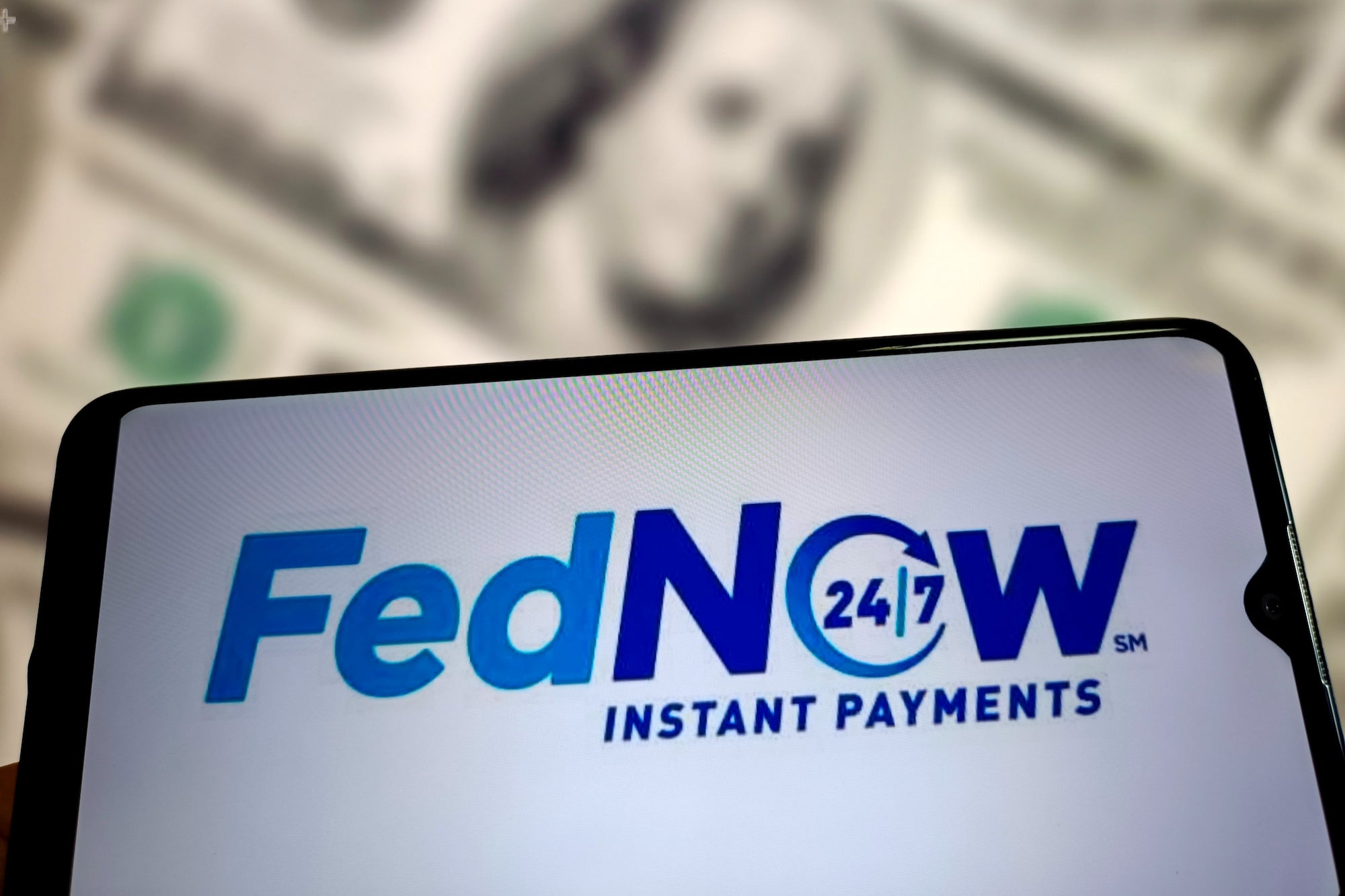Introduction
Welcome to the digital age, where technology has transformed the way we conduct financial transactions. The emergence of faster and more efficient payment systems has revolutionized the banking industry, providing customers with enhanced convenience and speed. One such system that has gained significant momentum is Real-Time Payments, commonly referred to as RTP.
RTP refers to a modern, electronic payment network that enables instant money transfers between bank accounts. Unlike traditional payment systems that take several business days to process transactions, RTP allows for immediate fund transfers, even outside of regular banking hours. This advancement in banking technology has streamlined the payment process, reducing friction and improving overall customer satisfaction.
With RTP, individuals and businesses can enjoy a wide range of benefits, from seamless transaction experiences to enhanced payment security. This article will delve into the various aspects of RTP in banking, shedding light on its definition, working mechanisms, advantages, and potential challenges.
Whether you are a curious customer looking to understand more about RTP or a financial professional seeking insights into the future of banking, this article aims to provide you with the information you need. So, let us embark on a journey to explore the world of RTP in banking.
Definition of RTP
Real-Time Payments (RTP) refers to a payment system that allows for instantaneous, secure, and irrevocable money transfers between accounts at different financial institutions. Unlike traditional payment systems, where funds may take several days to clear and settle, RTP enables near-instantaneous funds transfer, ensuring that recipients receive the funds in real time.
RTP functions on a 24/7 basis, meaning that payments can be initiated and received at any time, including weekends and holidays. This eliminates the need to wait for banking hours to process transactions, providing a level of convenience and flexibility that was previously unheard of in the banking industry.
The driving force behind RTP is the desire to meet the evolving needs and expectations of customers in today’s fast-paced digital world. With the rise of e-commerce, gig economy platforms, and the increasing demand for efficient cross-border transactions, there was a need for a payment system that could match the speed and convenience of these modern financial activities.
RTP operates on a centralized infrastructure that connects various financial institutions and payment service providers. This allows for the interoperability of different communication protocols and standards, ensuring seamless connectivity and secure transactions across the network.
Overall, the definition of RTP can be summed up as a cutting-edge payment system that enables instant, secure, and round-the-clock fund transfers between individuals, businesses, and financial institutions. With RTP, the boundaries of time and distance are blurred, allowing for faster and more convenient financial transactions.
Benefits of RTP in Banking
The adoption of Real-Time Payments (RTP) in the banking industry has ushered in a myriad of benefits for both financial institutions and their customers. Here are some notable advantages of RTP:
- Speed and Convenience: One of the primary benefits of RTP is the ability to transfer funds in real-time. Traditional payment methods, such as checks and wire transfers, can take days to process, causing delays and inconveniences. With RTP, individuals and businesses can instantly send and receive funds, improving cash flow management and reducing transactional friction.
- 24/7 Availability: RTP operates round the clock, enabling transactions at any time, including weekends and holidays. This constant availability ensures that businesses can receive payments promptly, even outside of regular banking hours, enhancing operational efficiency and customer satisfaction.
- Enhanced Payment Security: RTP incorporates robust security measures to protect against fraud, making it a secure payment method for both consumers and businesses. Real-time fraud detection algorithms and stringent authentication protocols help identify and prevent unauthorized transactions, instilling trust and confidence in the payment ecosystem.
- Improved Cash Flow Management: The real-time nature of RTP allows businesses to have better visibility and control over their cash flow. As funds are instantly available, organizations can allocate resources more efficiently, meet financial obligations promptly, and optimize working capital management.
- Streamlined Settlements: Traditional payment systems often involve multiple intermediaries and settlement processes, leading to delays and complexities. RTP eliminates intermediaries, enabling direct, peer-to-peer transfers. This streamlined approach simplifies the settlement process, reduces processing fees, and minimizes the risk of errors or lost payments.
- Support for Innovation: RTP opens up opportunities for innovation in the banking industry. Financial institutions can leverage the real-time payment infrastructure to develop and offer new services, such as instant loan disbursements, real-time bill payments, and personalized payment experiences. This fosters customer loyalty and keeps banks at the forefront of technological advancements.
These benefits demonstrate the transformative power of RTP in the banking landscape. By embracing real-time payments, financial institutions can enhance customer satisfaction, improve operational efficiency, and stay competitive in an increasingly digital world.
How RTP Works
Real-Time Payments (RTP) operates on a sophisticated infrastructure that allows for the seamless transfer of funds between different financial institutions. The process can be broken down into several key steps:
- Initiation of Payment: The RTP process begins when a payer initiates a payment request through their bank or preferred payment service provider. This can be done via online banking platforms, mobile apps, or other supported channels.
- Communication and Authorization: The payer’s financial institution receives the payment request and securely communicates the details to the recipient’s bank. Both financial institutions verify the authenticity of the transaction, ensuring that the payer has sufficient funds and the recipient is a valid account holder.
- Confirmation and Settlement: Once the payment request is authorized, the payer’s financial institution sends a confirmation to the recipient’s bank, indicating that the funds are available for immediate transfer. The settlement process takes place simultaneously, allowing for real-time movement of funds between the two banks.
- Notification and Availability of Funds: Once the settlement is complete, the recipient’s bank provides a notification to the recipient, informing them of the incoming payment. The funds are immediately available to the recipient, allowing them to use or access the funds without delay.
- Payment Status Updates: Throughout the RTP process, both the payer and recipient can receive real-time payment status updates. This includes notifications when the payment request is received, authorized, settled, and when the funds are made available. These updates provide transparency and reassurance to both parties involved.
The underlying technology and infrastructure that enables RTP may vary, but the fundamental principle remains the same – to facilitate the secure and instantaneous transfer of funds. This is achieved through interconnectivity between financial institutions, robust security measures, and adherence to industry standards and protocols.
RTP systems are designed to handle high volumes of transactions simultaneously, ensuring scalability and reliability. They also prioritize data integrity and confidentiality, employing encryption and authentication protocols to safeguard sensitive payment information.
Overall, the workings of RTP involve a carefully orchestrated process of communication, authorization, settlement, and notification, culminating in the real-time availability of funds for the recipient. This streamlined approach revolutionizes the way payments are made, setting a new standard for speed, convenience, and efficiency in the banking industry.
Security and Privacy of RTP
As with any electronic payment system, ensuring the security and privacy of transactions is a vital aspect of Real-Time Payments (RTP). The following measures are employed to safeguard the integrity of RTP transactions:
- Encryption: RTP adopts robust encryption techniques to protect the confidentiality of data during transmission. This ensures that sensitive information, such as account details and transaction details, cannot be intercepted or accessed by unauthorized parties.
- Authentication: To prevent fraudulent activities, RTP incorporates strong authentication protocols. This involves verifying the identity of both the payer and the recipient before authorizing any transaction. Multi-factor authentication, such as using a combination of passwords, biometrics, and one-time verification codes, adds an extra layer of security.
- Fraud Detection: Real-time fraud detection algorithms are employed within RTP systems to identify and prevent fraudulent transactions. Suspicious activities, such as unusual spending patterns or high-value transfers, trigger alerts for further investigation, minimizing the risk of financial loss due to fraudulent activities.
- Data Privacy: RTP systems prioritize the privacy of user data, adhering to strict data protection regulations. Personal and financial information is stored securely and is only accessed by authorized parties for necessary transaction processing. Financial institutions and payment service providers involved in RTP are also bound by privacy policies and regulations to safeguard customer data.
- Dispute Resolution: In the event of a dispute or unauthorized transaction, RTP provides mechanisms for dispute resolution and fraud mitigation. Financial institutions have established procedures to investigate and resolve such cases efficiently, ensuring that customers are protected from potential financial losses.
It is crucial for users to remain vigilant when using RTP services. Recommended practices include setting strong and unique passwords, regularly monitoring account activity, and promptly reporting any suspicious transactions to the relevant financial institution.
Financial institutions and regulatory bodies play a significant role in ensuring the security and privacy of RTP. They enforce industry standards and regulations, conduct regular audits, and provide guidance to banks and payment service providers to maintain the integrity of the RTP ecosystem.
By prioritizing security and privacy, RTP instills confidence in users, facilitating widespread adoption and enabling the potential for a cashless society. As technology continues to advance, so too will the security measures of RTP, ensuring that it remains a safe and reliable payment option for individuals and businesses alike.
RTP in Different Banking Services
The implementation of Real-Time Payments (RTP) has revolutionized various banking services, enhancing efficiency and convenience for both customers and financial institutions. Let’s explore how RTP is reshaping different areas of banking:
- Person-to-Person (P2P) Payments: RTP has transformed P2P payments, allowing individuals to instantly send and receive funds from their bank accounts. Whether it’s splitting a bill, reimbursing a friend, or sending money to family members, RTP provides a seamless and convenient way to transfer funds.
- Business-to-Customer (B2C) Payments: RTP has streamlined B2C payments by enabling businesses to provide real-time payouts to their customers. This includes instant refunds, rewards, and cashback programs. With RTP, businesses can enhance customer satisfaction and loyalty by offering immediate access to funds.
- Business-to-Business (B2B) Payments: RTP is transforming B2B payments by providing faster settlement and improved cash flow management. Companies can make instant payments to suppliers, contractors, and service providers, facilitating smoother business operations and reducing reliance on paper-based processes.
- Bill Payments: RTP has simplified bill payments by enabling customers to settle their bills in real time. This includes utility bills, credit card payments, loan repayments, and more. Users can conveniently initiate payments online or via mobile apps, ensuring that their bills are paid promptly and avoiding late fees.
- E-commerce: RTP offers a seamless checkout experience for e-commerce transactions. By integrating RTP into online shopping platforms, customers can make instant payments, eliminating the need for credit card authorizations or delayed payment confirmations. This enhances customer satisfaction and reduces cart abandonment rates.
- Government Disbursements: Governments are adopting RTP for distributing benefits, tax refunds, and other disbursements. This helps individuals and businesses receive their funds quickly, reducing administrative burdens and eliminating the need for physical checks or manual processing.
- Cross-Border Payments: RTP is being utilized to facilitate faster and more cost-effective cross-border transactions. By leveraging interoperable networks and partnerships between financial institutions globally, RTP enables near-instantaneous settlement and reduces reliance on traditional correspondent banking networks.
RTP is seamlessly integrated into banking services, providing individuals and businesses with a faster, more secure, and convenient way to manage their financial transactions. As the demand for instant payments continues to grow, RTP will continue to evolve and shape the future of banking services.
Comparison to Traditional Payment Systems
Real-Time Payments (RTP) has emerged as a game-changer in the banking industry, offering significant advantages over traditional payment systems. Let’s compare RTP to conventional methods to understand its transformative impact:
Speed and Efficiency: RTP provides near-instantaneous fund transfers, whereas traditional payment systems, such as checks or wire transfers, can take days to clear. RTP eliminates the waiting time, enabling recipients to access funds immediately, improving cash flow management for both individuals and businesses.
24/7 Availability: Unlike traditional systems that have limited operating hours, RTP operates round the clock. This allows for payments to be made and received at any time, including weekends and holidays. The constant availability of RTP enhances customer convenience and eliminates delays associated with traditional banking hours.
Transaction Tracking: RTP offers real-time payment status updates, allowing users to track the progress of their transactions. In contrast, traditional systems often lack timely visibility into transaction status, leaving users in the dark about the progress of their payments.
Cost-Effectiveness: RTP can offer cost savings compared to traditional methods. For example, RTP eliminates paper-based processes, reducing costs associated with check printing, postage, and manual reconciliation. Additionally, the streamlined nature of RTP reduces the need for intermediaries, minimizing processing fees and associated expenses.
Global Reach: RTP has the potential to facilitate faster and more efficient cross-border payments. Traditional international transfers often involve multiple intermediaries and complex correspondent banking networks, resulting in longer processing times and higher fees. RTP’s interoperable network infrastructure enables faster settlement and reduced reliance on traditional systems.
Enhanced Security: RTP incorporates advanced security features, including encryption, authentication, and real-time fraud detection. Traditional systems may be more susceptible to fraud, with checks being subject to alteration or loss during the physical transportation process. RTP’s secure mechanisms provide peace of mind for both consumers and businesses.
Customer Experience: With its speed, convenience, and real-time benefits, RTP offers an improved customer experience compared to traditional payment systems. The instant availability of funds, seamless transactions, and the ability to make payments at any time lead to increased customer satisfaction and loyalty.
These comparisons highlight the clear advantages of RTP over traditional payment systems. As technology continues to evolve, it is expected that RTP will become the new norm, driving the transformation of the banking industry and shaping the future of financial transactions.
Challenges and Concerns with RTP
While Real-Time Payments (RTP) brings numerous benefits to the banking industry, there are also various challenges and concerns that need to be addressed. Here are some of the key issues associated with RTP:
- Infrastructure Readiness: The successful implementation of RTP requires robust and reliable infrastructure that can handle high transaction volumes and ensure seamless connectivity across financial institutions. Ensuring that all participating banks and payment service providers have the necessary technology and resources can be a significant challenge.
- Interoperability: To achieve the full potential of RTP, interoperability is crucial. However, achieving seamless integration across different banking systems and payment processors can be complex. Establishing common standards, protocols, and communication channels is essential to ensure interoperability and avoid fragmentation within the RTP ecosystem.
- Security and Fraud: With the speed and convenience of RTP, the risk of potential security breaches and fraud increases. Cybercriminals constantly evolve their methods and target vulnerabilities in payment systems. Effective security measures, such as robust encryption, multi-factor authentication, and real-time fraud detection, must be in place to protect against unauthorized access and fraudulent activities.
- Consumer Education: Educating consumers about the benefits and proper usage of RTP is vital to ensure its widespread adoption. Many individuals may be unfamiliar with the concept of real-time payments and may have concerns about the security and privacy of their transactions. Providing clear and comprehensive information to users will help build trust and confidence in using RTP for their financial transactions.
- Regulatory Compliance: RTP must adhere to regulatory frameworks to ensure compliance with anti-money laundering (AML) and counter-terrorism financing (CTF) regulations. Financial institutions and payment service providers must implement robust compliance programs to prevent misuse of the real-time payment system for illicit activities.
- Inclusive Access: It is crucial to ensure that RTP is accessible to all individuals, including those who may not have access to smartphones, internet connectivity, or traditional banking services. Addressing the digital divide and promoting financial inclusion is necessary to ensure that the benefits of real-time payments reach all segments of society.
Addressing these challenges and concerns requires collaboration among financial institutions, regulatory bodies, and technology providers. Through collective efforts, the industry can work towards enhancing the security, reliability, and accessibility of RTP, making it a trusted and widely adopted payment option.
Conclusion
Real-Time Payments (RTP) has revolutionized the banking industry, offering unprecedented speed, convenience, and security in financial transactions. RTP enables near-instantaneous fund transfers, operates round the clock, and provides real-time payment status updates. It has reshaped various banking services, including P2P payments, B2C payments, B2B payments, e-commerce, and cross-border transactions.
The benefits of RTP are clear: improved cash flow management, enhanced customer experience, cost savings, and streamlined settlements. RTP’s secure infrastructure, encryption techniques, and strong authentication protocols ensure the privacy and safety of transactions.
However, the adoption of RTP also comes with challenges and concerns. Infrastructure readiness, interoperability, security, consumer education, regulatory compliance, and inclusive access need to be addressed to ensure the seamless and widespread adoption of RTP. Collaborative efforts among financial institutions, regulatory bodies, and technology providers are essential to overcome these challenges.
As RTP continues to evolve, it has the potential to further transform the banking landscape, fostering innovation and meeting the evolving needs of customers. It will play a crucial role in driving the transition to a cashless society and shaping the future of financial transactions.
The advent of RTP has ushered in a new era of banking, offering users the ability to send and receive money in real time, breaking down barriers of time and distance. As the technology continues to advance, it is vital for the banking industry to embrace and optimize RTP to meet the ever-increasing demands for speed, security, and efficiency in financial transactions.
Real-Time Payments have the power to reshape the way we conduct financial transactions, offering a glimpse into a future where the movement of money is as instantaneous as the click of a button.

























